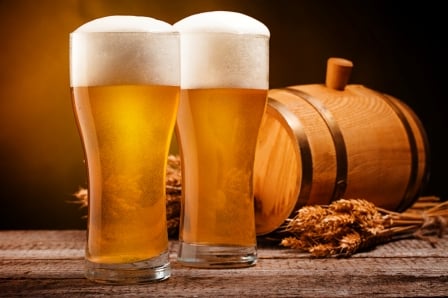This week I take a look at the very important topic of blending traditional sour and barrel aged beers.
Traditional sour beer brewing, where fermentation is done before the souring, as well as many barrel aged beers can be hard to get right the first time. Both involve very long maturation cycles, relatively high alcohol beers and unknown levels of sourness and barrel flavors. For this reason many aged sour and barrel aged beers are often blended at the commercial level.
Blending Beers
Blending is widely used in the spirit and wine fields as it can achieve a better overall product than using a single wine or distillate. In fact a large portion of the spirits and wines we drink are blended. Often you can hide flaws or achieve a better balance by blending two beverages.
The same can be achieved with your sour or barrel aged beers. You can lower the sourness or harshness of a beer, increase its likability or achieve better balance. In fact you can brew a specific beer designed to complement or cover up flaws in an existing sour or barrel aged beers. Sometimes blending young and older beers can enhance the profile of both.
You can also add new flavors to an aged beer. For example you can add fruit, blend dark and light beers, or enhance the hop or malt flavors.
Blending in Practice
The first step is choosing which beers to blend. Wine makers will often pull wines from a number of different vintages to make their blend and if you have a deep cellar of aged beers this is a good strategy. If not, then choose beers that are likely to complement each other.
Next you want to create sample blends of the beers. For this step I find it best to start with a fixed amount of beer, say 100 ml, and then add a measured amount of the flavoring (or flavored beer) until I get the precise flavor balance I want. Once you have the right mixing proportions simply scale it up to the size of the batch you’ve made to get the right balance up front. By blending your beers in this way you can often get a better beer.
Blending is an important arrow to have in your brewing quiver! Thanks for joining me on the BeerSmith Home Brewing Blog. Be sure to sign up for my newsletter or my podcast (also on itunes…and youtube) for more great tips on homebrewing.
Related Beer Brewing Articles from BeerSmith:
- Beer Blending Strategies for Home Brewers
- Kettle Souring Beer – Brewing Techniques
- Brewing Oud Bruin (Flanders Brown) Beer Recipes
- Barrel Aged Sours with CJ Shamas- BeerSmith Podcast #112
- Sour Beer Alternatives for Home Brewers – Part 1: Kettle Souring
- Old Ale Recipes – Stock Ale and Winter Warmers
- Barrel Aged Stouts with Skip Schwartz – BeerSmith Podcast #287
- Soured Beer in Homebrewing
Don't make another bad batch of beer! Give BeerSmith a try - you'll brew your best beer ever.
Download a free 21 day trial of BeerSmith now




{ 0 comments… add one now }